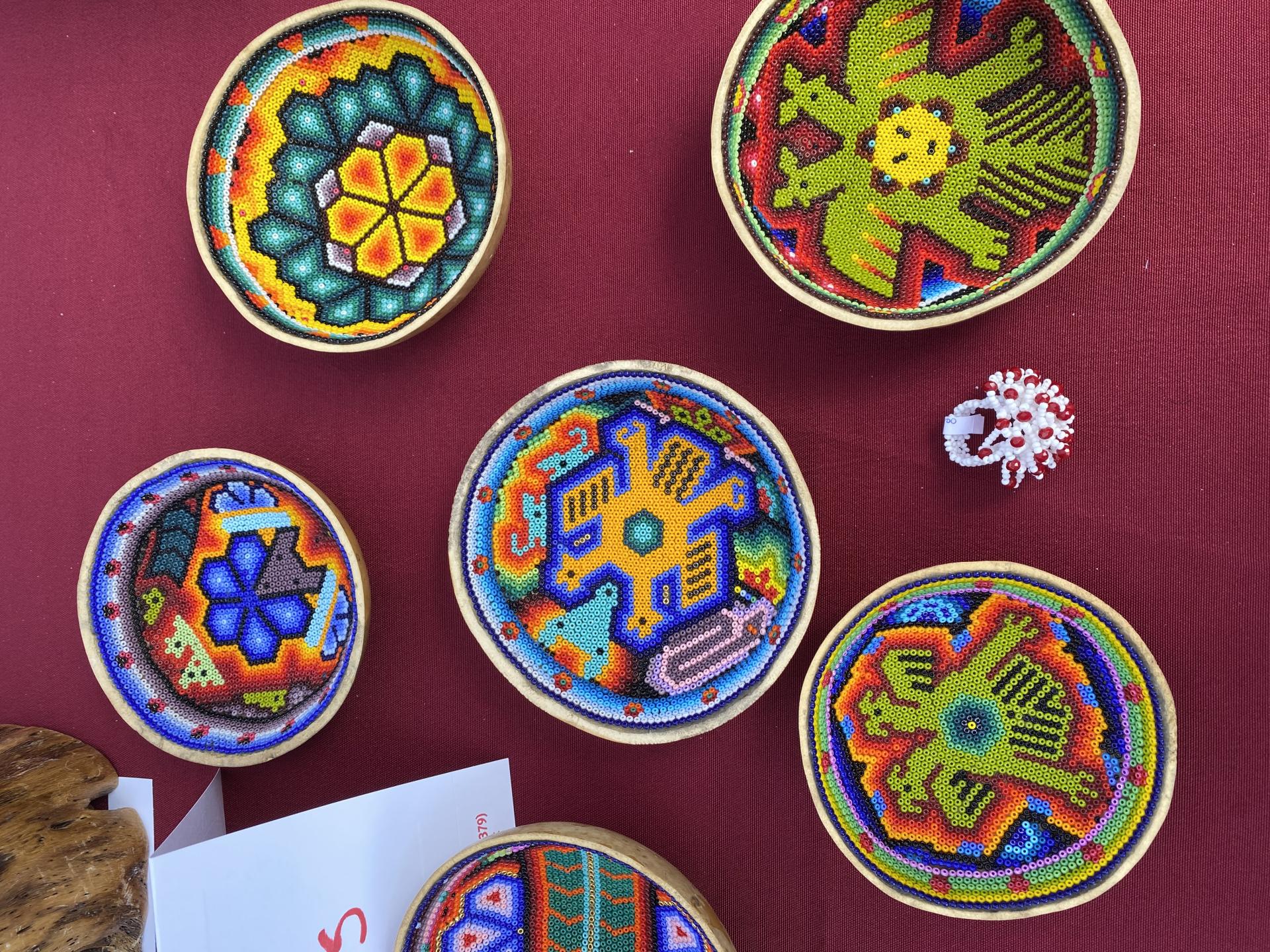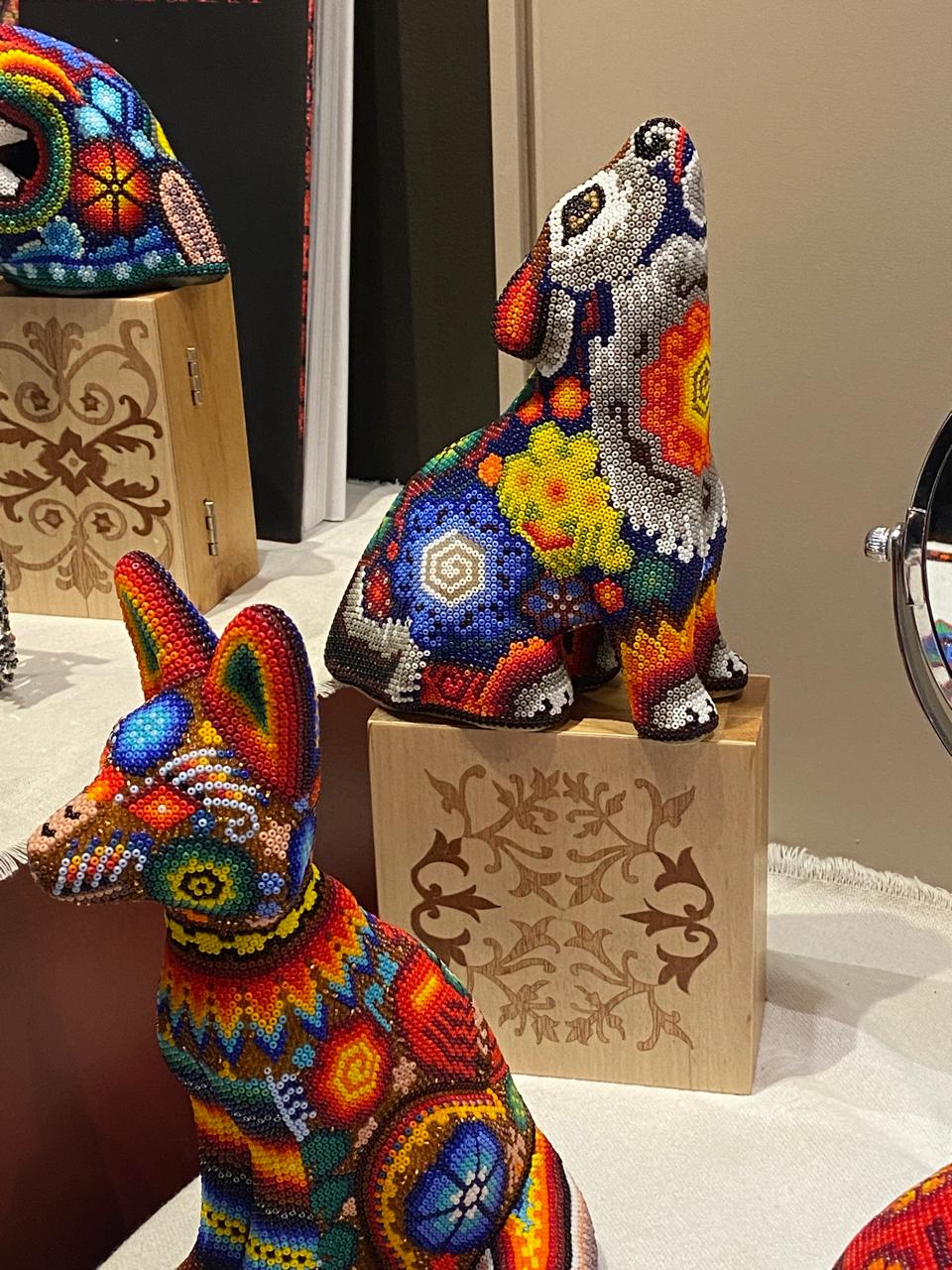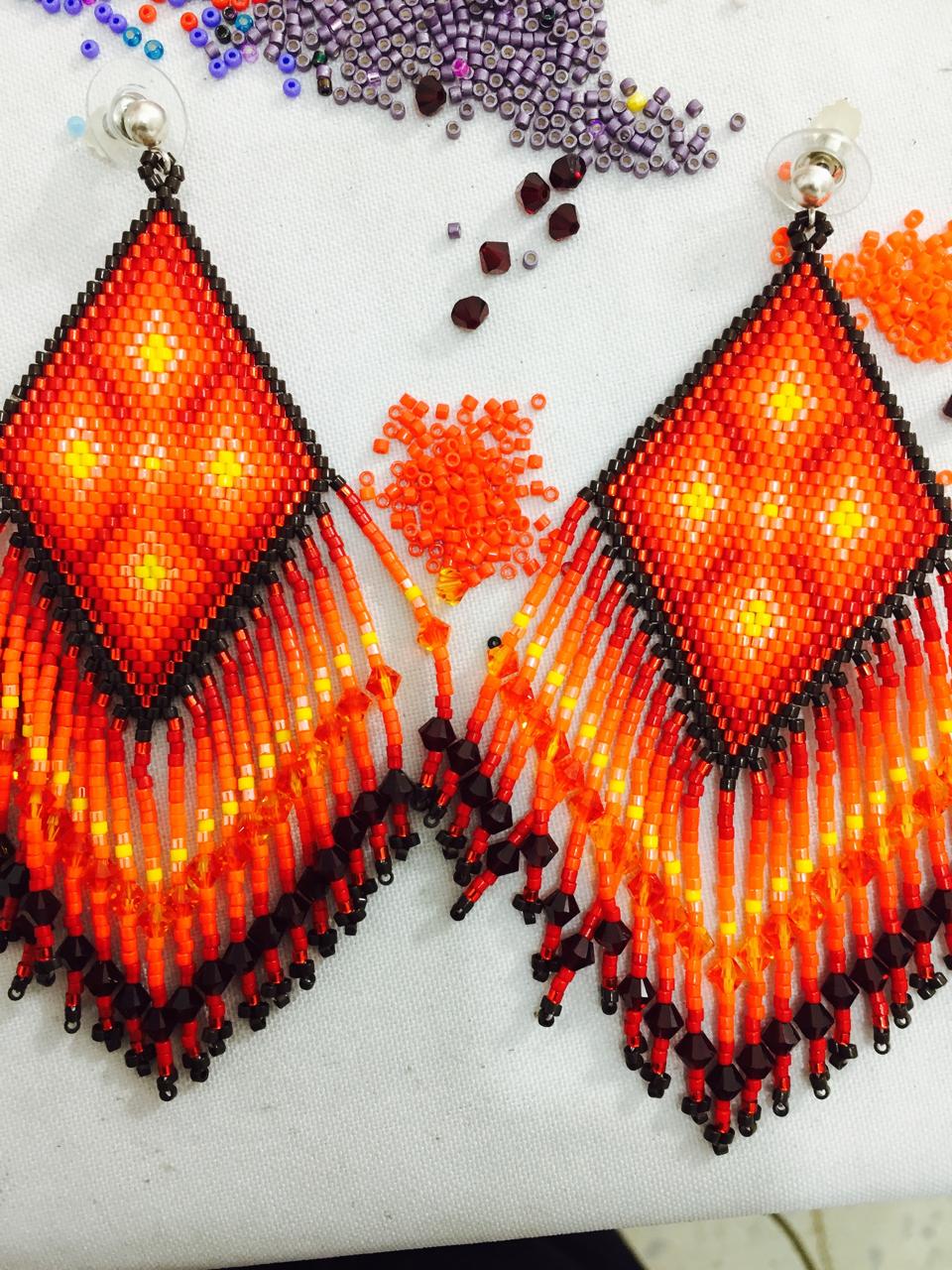
Herminio Ramirez Diaz (Wixárika/Huichol) is a beading artist from San Andrés Cohamiata, Sierra de Jalisco, Mexico. He learned his craft at a very young age by watching his father, “out of interest, not out of obligation; empirically, first by seeing the basics, and then the most complex, exclusive designs, [always] with the essence of Wixárika. At 13 or 14, I had already learned and developed all the basic bead techniques and became inspired to create unique pieces. I started designing jewelry. I am always creating unique art with the essence of the Wixárika worldview. It is very important to be involved in the ceremonies and rituals of our People to continue deepening the knowledge of the culture,” says Ramirez.
Symbolism is important in Wixárika art, and Ramirez’s work incorporates symbols that carry a message of the Wixárika culture and cosmology. “It is a form of conservation and protection,” he says. “In each piece, the deer is reflected. In the spiritual and cosmogonic world, the deer is the main guide of knowledge linked to the Hikuri (peyote), sacred fruit of the gods, that only the Wixárika has access to. We have been given a gift, and through it, we are shown the path of the wise. Another element used is the cornfield, because it is a living being that sacrifices itself to give the fruits that feed [the deer]. The double-headed eagle is also used a lot, representing the union and communication between two different dimensions, one sacred and the other material, which is what we inhabit. In addition, the wise men or knowledge keepers of the community use their feathers for sacred ceremonies. Our art is a living form of our worldview,” Ramirez says.

Ramirez has had the opportunity to share his Wixárika art in Indigenous art spaces across Mexico, the United States, Ecuador, Asia, and Europe. His art has been shown at renowned venues and galleries, and now at the Cultural Survival Bazaars. “Wixárika art and craftsmanship is a process of continuous change,” Ramirez says. “Before the existence of the bead, the main raw material of our art, natural materials such as seeds, shells, bones, stones, and feathers were used. However, with the invasion of the Spanish on our lands, they brought with them the glass material that was introduced little by little into our culture. Today, that glass material is the very fine Czech bead, and over the years we have adapted it to represent our symbology and worldview, decorating jaguar head figures, votive gourds, wooden figures, and other animals. It embodies sacred symbols of our culture, symbols that represent the divine. Meanwhile, in jewelry, I am inspired to make beaded representations of the plants and flowers that are used in ceremonies” Ramirez says.
Aside from being an important cultural practice, Wixárika art offers families a way to earn or supplement their living. “Art is an important cultural manifestation for the Wixárika Peoples, and also a way to protect and transmit our worldview. As Indigenous artists from Mexico, we are limited in finding markets for the exhibition of our art, spaces where Indigenous art is valued. Wixárika art and crafts are of vital importance to us, because in addition to functioning as an economic entity for many families, it serves to keep alive the traditions and creations of Wixárika artists,” Ramirez says.

In Mexico, as in most countries with Indigenous populations, there is a systemic violation of human rights. Faced with the threat of the re-entry of mining companies to Wirikuta, the Wixárika people formed the the civil association Wixárika Union of Ceremonial Centers in 2006, and the Front in Defense of Wirikuta Tamatsima Wahaa in 2011. “We live in scarcity, and in some cases we are non-existent to the State,” Ramirez says about his other work as a land defender and rights activist. “Our demands in territorial defense, our recognition, the autonomy of our communities are often ignored. The Wixárika Peoples have been fighting in defense of their territory for more than 50 years, and to date there is no recognition. We also continue to defend our sacred places in always from the imminent threat of large extractive corporations.”
Come to our upcoming Cultural Survival Bazaar at the Prudential Center in Boston, MA, on December 5–8, 2024. For more information visit: bazaar.cs.org.

